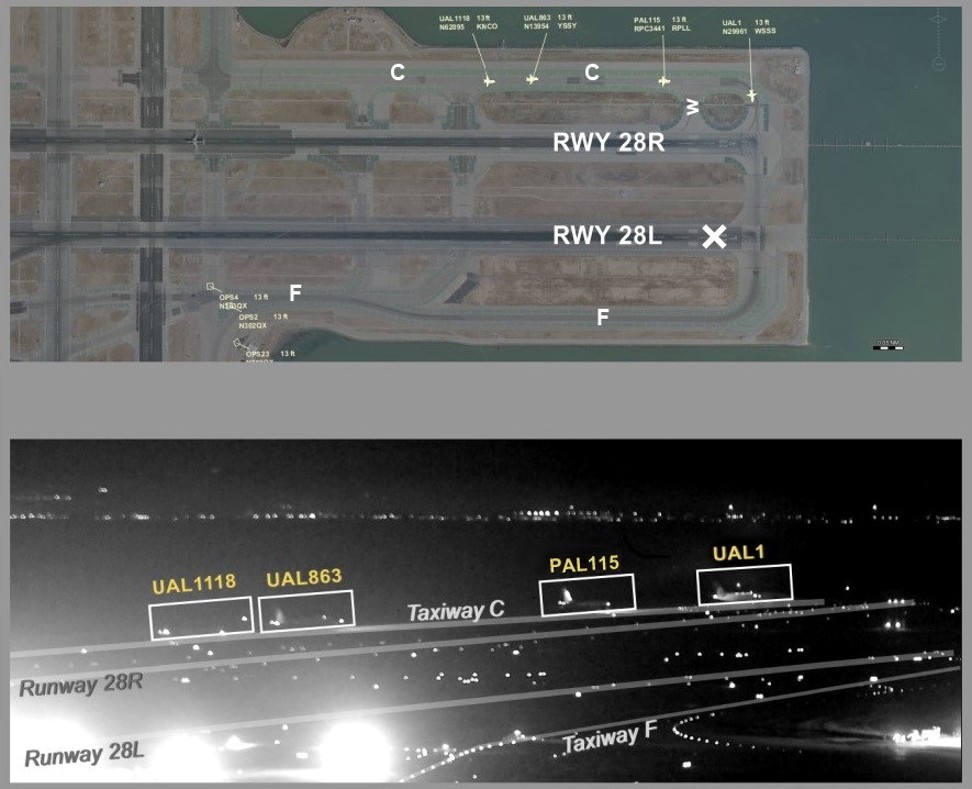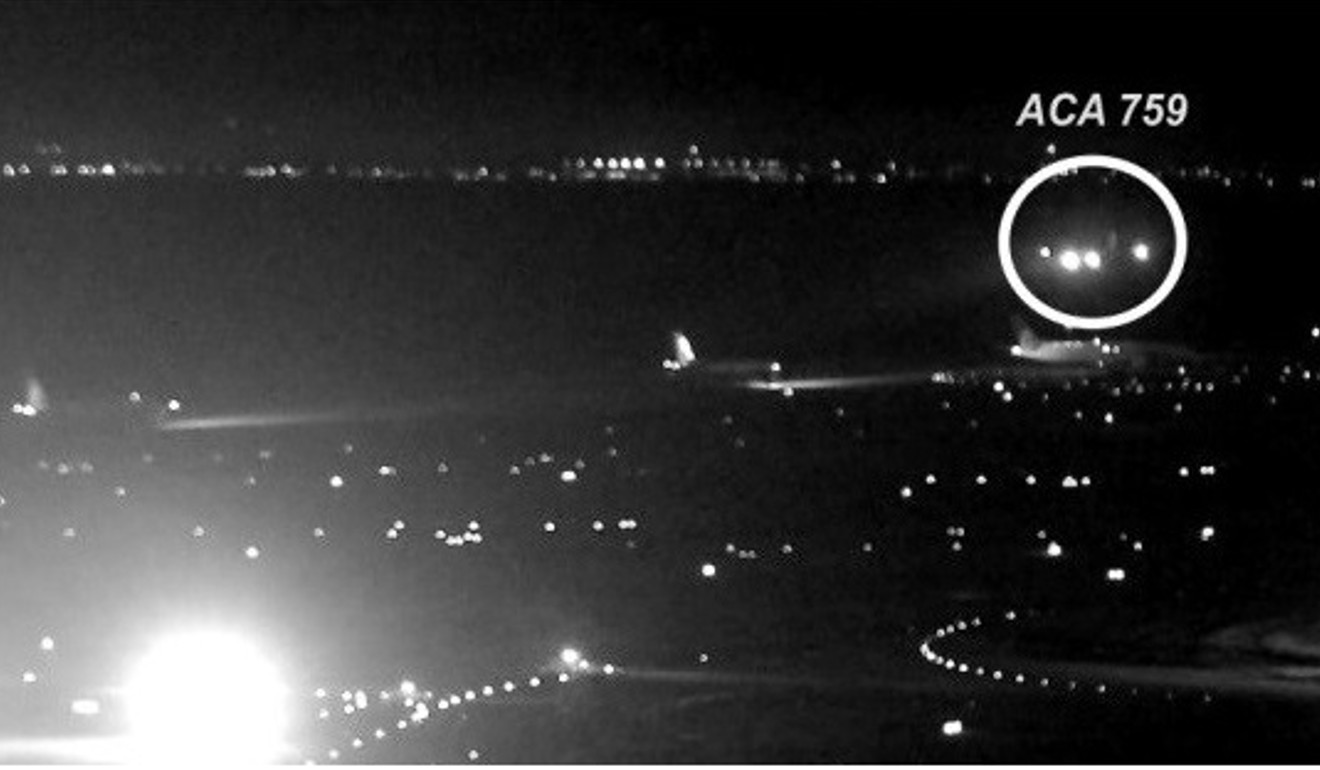
18 metres from disaster: shocking photos reveal how close jet came to landing on four other airliners in San Francisco
July 7 incident in which Air Canada plane almost landed on taxiway instead of runway could have been worst disaster in aviation history, with more than 1,000 people aboard the five aircraft
Newly released data and photos show how shockingly low an Air Canada jet was when it pulled up to avoid crashing into planes waiting on a San Francisco International Airport taxiway last month.
The Air Canada pilots mistook the taxiway for the runway next to it and flew their jet to just 18 metres above ground before pulling up to attempt another landing, according to National Transportation Safety Board information released Wednesday.
That’s barely taller than the tails of the four planes that were on the taxiway when the incident occurred late at night on July 7.

NTSB investigators said they have not determined probable cause for the incident that came within a few metres of becoming perhaps worst disaster in aviation history. More than 1,000 people were reportedly on the planes. The aircraft on the ground were loaded with fuel.
“It was close, much too close,” said John Cox, a safety consultant and retired airline pilot.



Both pilots of the Air Canada Airbus A320 jet were very experienced. The captain, who was flying the plane, had more than 20,000 hours of flying time, and the co-pilot had about 10,000 hours.
The pilots told investigators “that they did not recall seeing aircraft on taxiway but that something did not look right to them,” the NTSB said.
Investigators could not hear what the Air Canada captain and co-pilot said to each other during the aborted landing because their conversation was recorded over when the plane made other flights, starting with a San Francisco-to-Montreal trip the next morning. Recorders are required to capture only the last two hours of a plane’s flying time.
Peter Fitzpatrick, a spokesman for Air Canada, declined to comment, citing the ongoing investigation.

